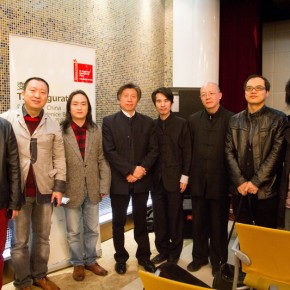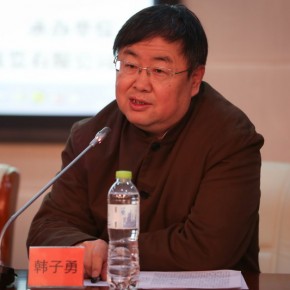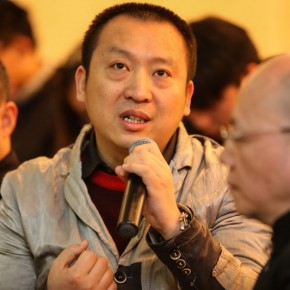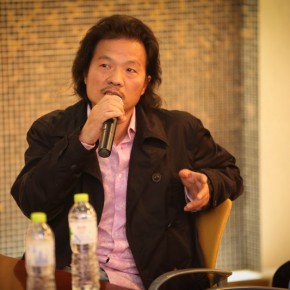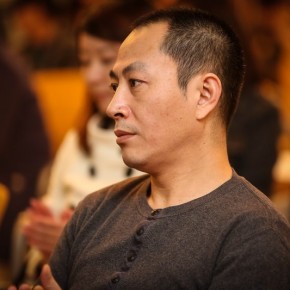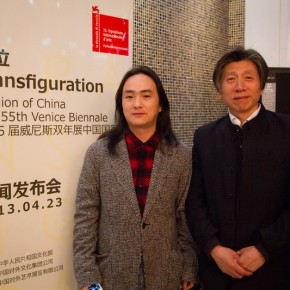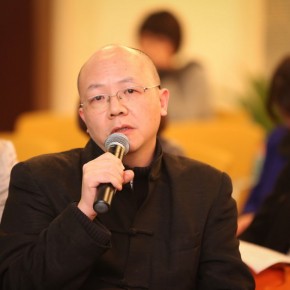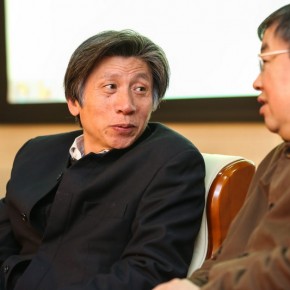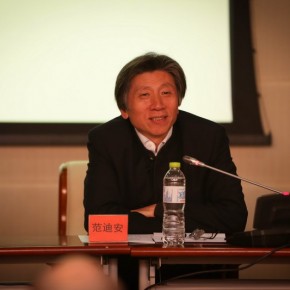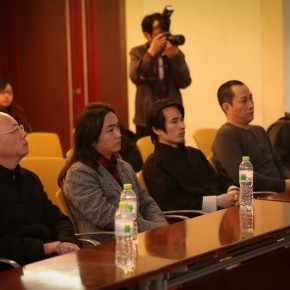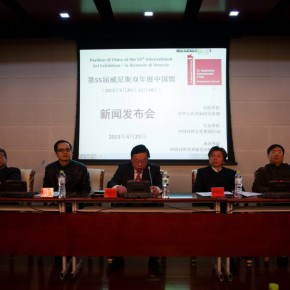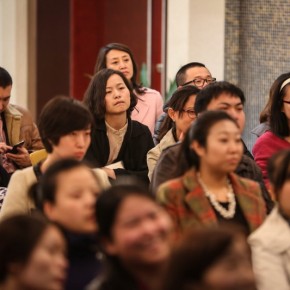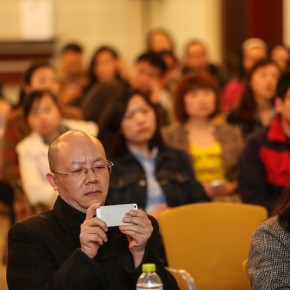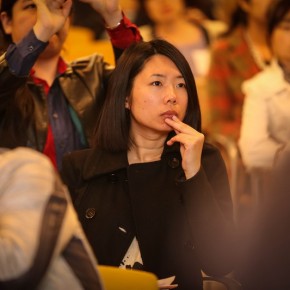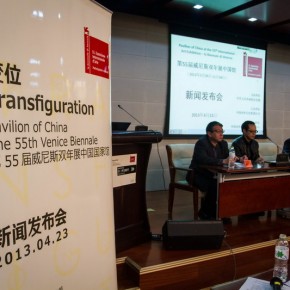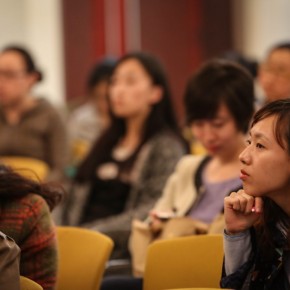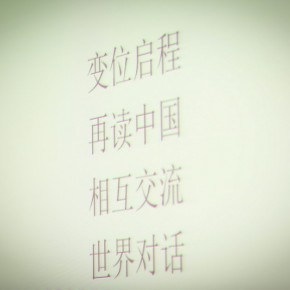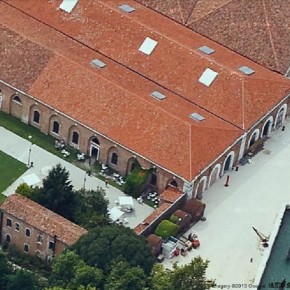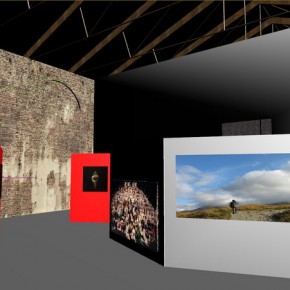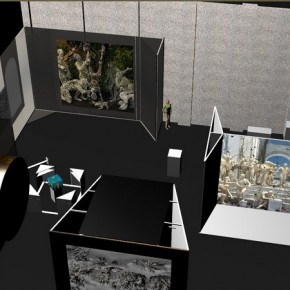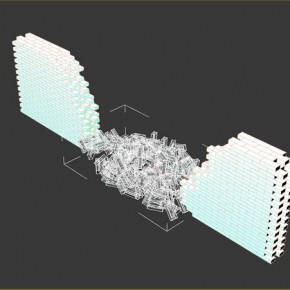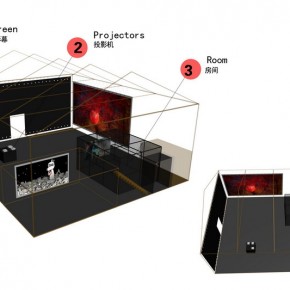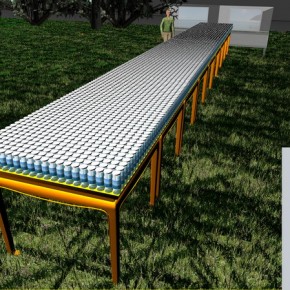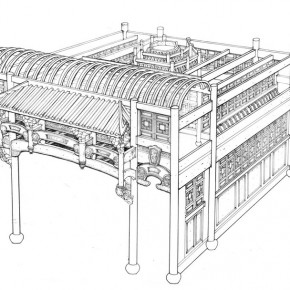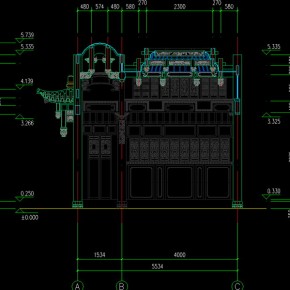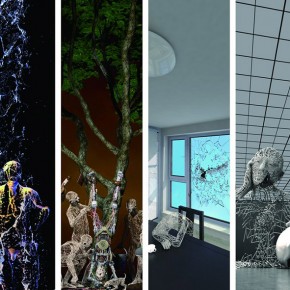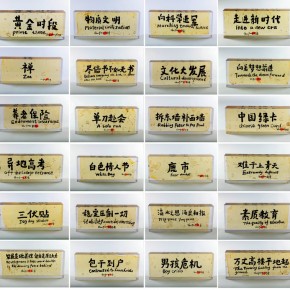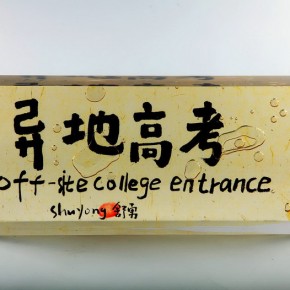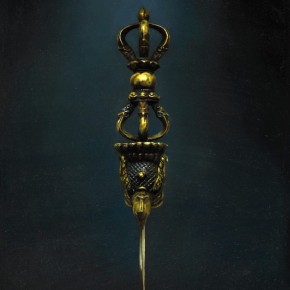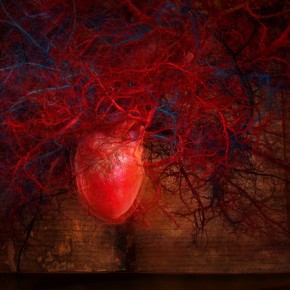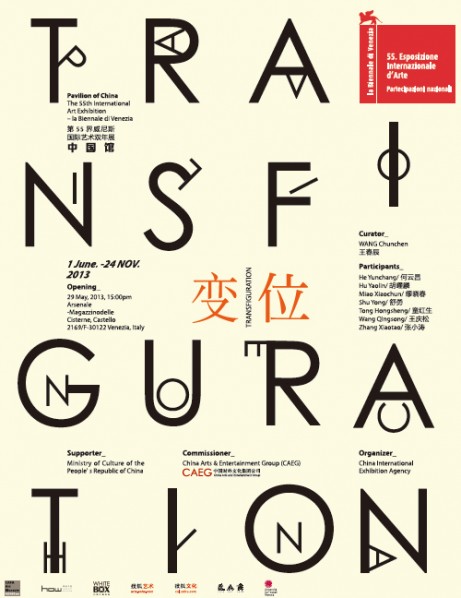
The press conference of the “Exhibition of Chinese Pavilion for the 55th Venice Biennale” was held at the underground floor hall of Juran Building, Dongzhimen, Beijing, on April 23, 2013. Guests present included Han Ziyong, Vice Chairman of the China Arts and Entertainment Group, Fan Di’an, Director of National Art Museum of China, Xie Jinying, Deputy Secretary of the Department of Outreach of the Ministry of Culture, Yan Dong, Vice General Manager of the China Arts and Entertainment Group, Wang Chunchen, Curator of Chinese Pavilion of Venice Biennale, as well as seven participating artists: He Yunchang, Hu Yaolin, Miao Xiaochun, Shu Yong, Tong Hongsheng, Wang Qingsong, Zhang Xiaotao.
Honorable guests and artists addressed at the conference. Wang Chunchen gave a comprehensive report on the news media and the public, initially introducing the curatorial concepts, then prominent expressive themes, programs of the artists, and other details. He talked about an important change in the Chinese Pavilion at the Venice Biennale 2013 as the huge oil tanks were removed, with the help of the Ministry of Culture, Ministry of Foreign Affairs of China, who repeatedly negotiated with the Italian organizer, effectively solving the problem of a narrow space and dim light in the pavilion. Fan Di’an said, with emotion, it was a new level for the exhibitions at the Chinese Pavilion, a new starting point!
The 55th Venice Biennale will be held in Venice from June 1st through to November 24th 2013, China will participate in this international event of contemporary art in the form of a National Pavilion. Commissioned by China’s Ministry of Culture, “Transfiguration – the Chinese Pavilion of the 55th Venice Biennale” will be held by the China Arts and Entertainment Group in the Venice Virgin Garden and Armory from May 29 through to November 24, 2013, organized by the China International Exhibition Co., Ltd, affiliated with China Arts and Entertainment Group, featuring seven sets of conceptual installations which are separated but interrelated to each other.
“Transfiguration” is about to be presented in Venice
Wang Chunchen’s proposal of “Transfiguration” was selected during the assessment of the committee organized by Ministry of Culture of China, in February 2013. “Transfiguration” refers to contemporary changes in art and its thinking, especially referring to the surpassing of the gap between life and art, the transformation of life to art, of the commonplace to artworks or art performance, of non-art to art, etc., which contains one of the essences of contemporary art.
Seven artists are going to feature their works in the exhibition at the Chinese Pavilion. He Yunchang is a sincere and honest artist, and has always conceived and questioned the world, by using his own body as an expressive object, the exhibition features his work “Seawater of Venice”, which stresses that the communication between people is the continuum of social behaviors; In recent years, Hu Yaolin engaged in protecting, repairing and reconstruction of the buildings of ancient Chinese style, which have gradually disappeared from our vision, because of the rapid development of the cities. “Thing in Itself” symbolically imitates the shape of the large dome of the Pantheon in Rome, revealing the complex nature of the artist that as the reproduction of Chinese cultural heritage; Miao Xiaochun is a researcher of new media art, and his works are the observation and interpretation of history and culture, by a contemporary Chinese artist; Shu Yong focuses on the public participation and interaction, the installation “Ancient Song Bricks” is a collection of the vocabulary of cultural phenomenon, written by himself to portray the information of the philosophy of life, popular state and social change in contemporary society; Tong Hongsheng prefers to express his own inner feelings and beliefs in daily things, “Still Life Series” has symbolized the faith, which has become a cultural relic; Wang Qingsong’s photography can be seen as the symbolized images of Chinese reality, as well as the visual expression of the reading installation and educational landscape in Chinese transformation; Zhang Xiaotao is an artist of cross media, from the early creation of oil painting to the new media art used today, exploring the possibility of painting language with digital art, his animations can be regarded as the fables of the social changes and future prospects.
The word “Transfiguration” originated from the English language which originally referred to Christ’s appearance when Christ transformed into the images of the characters, extending to transformation, change, deformation, etc. Today, it has various directions, and is the combination of the tradition and contemporary, and its roots contain the meaning of “figure” or “image”, which coincide with the spirit of “the confluence of the dreams and images of humans”, advocated by the 55th Venice Biennale, themed “The Encyclopedic Palace”; “transfiguration” also contains geographic, spatial, and graphic concepts, such as position, location, and diagram position, carrying and symbolizing the characteristics of the times in its connation, prominently reflecting the features of the contemporary international community, not only China in upheaval, but also the world changing through globalization. One of the characteristics of art is to reflect and respond to the changes of the times, showing the dreams of humans and rendering of new images, because the change and development of the picture and image are composed of visual civilization and knowledge of humans. Transfiguration means that transforming a thing to a shape and even an image, and then the evolution of art and history.
“Read China Again” promotes international exchanges and dialogues
The exhibition in the Chinese Pavilion will highlight Chinese culture and the characteristics of Chinese contemporary art to Europe and the world, indicating the developmental trends of Chinese contemporary art, narrowing the distance between the world and Chinese culture, also hoping this exhibition become a platform for international exchange in art circles, and a focus for the media from all walks of life, according to its own features, at the Venice Biennale.
Translated by Chen Peihua and edited by Sue/CAFA ART INFO


